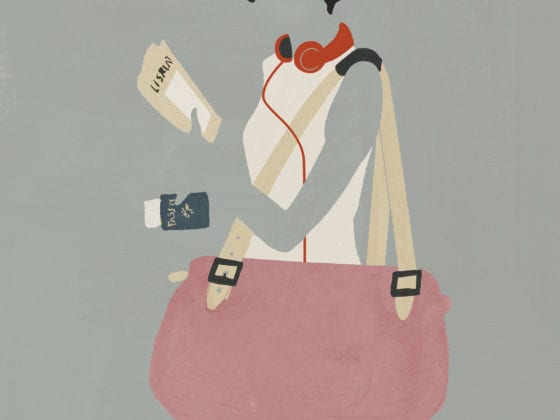The COVID-19 outbreak was declared “a global pandemic” on March 11, 2020. Since then, countries all around the globe have shut down. Schools closed early or shifted to online learning. Adults transitioned to working from home as children went home as well.
For many parents, these major life changes have taken a toll. Parents who are essential workers are seeking out childcare. Parents who work from home are juggling career and children. Parents who have lost their source of income are looking for work while simultaneously caring for children.
As the new school year approaches, parents must decide if they will send their children back to school—if schools reopen. States are implementing regulations intended to keep children and teachers safe, and some schools will be offering multiple options such as online learning. The dilemma is complex, as there are benefits and costs to parents regardless of what they choose.
Darling interviewed parents and educators from different backgrounds to understand their current experiences and concerns for the upcoming school year.
Hybrid and Online Learning
As a result of stay-at-home orders, some schools have gotten creative in their teaching methods. For Stacy Robin, business and innovation consultant, her child’s school had stepped up to the challenge of remote teaching when kids were sent home.
As a result of stay-at-home orders, some schools have gotten creative in their teaching methods.
“They (the pre-Kindergarten class) had online gym twice a week and story time every week night,” Robin said. “Each child had a one-on-one with the teachers each week. They even created an online musical.”
Robin recognizes that her school is different from most schools still scrambling to figure out the fall plan. Eileen, another parent and educator, received no information from her son’s school district or the school district where she teaches regarding safe reopening plans. She questions the quality of learning with all the safety measures in place, and she also worries that schools lack the resources to facilitate safe, in-person teaching.
“From my years as an educator, I know most classrooms are already overcrowded, leaving little room for sufficient social distancing,” Eileen explained. “I believe it will present a real challenge for teachers of elementary-age children to enforce mask wearing, social distancing, hand-washing and constant sanitizing.”
Other parents, such as Gulienne Rollins-Rishon, have been planning a migration to homeschool for years.
“We had originally planned on most likely starting homeschooling/unschooling next year, but with everything so much up in the air, this just seemed like the right time to start,” Rollins-Rishon said. “In addition, most if not all of the learning building blocks that I didn’t feel confident in previously, my or my husband’s ability to instill as a solid foundation were achieved this year.”
Social and Developmental Concerns
Whether or not schools successfully reopen is yet to be seen, but one common concern voiced by parents has been the impact of isolation on their children and the lack of peer socialization.
In an interview with Darling, Dr. Wendy Reinke, Ph.D., a psychologist and researcher who specializes in preventing disruptive behavior problems in children through compelling, evidence-based practices, explains that there are drawbacks to both scenarios—going back to the classroom and continued e-learning.
“Young children will struggle with staying socially distanced in classrooms and with friends,” Dr. Reinke said. “It is likely we will see an increase in anxiety and other mental health issues among children.”
For those who are staying home, Dr. Reinke said, “The combination of social distancing and online learning can impact the social-emotional development of children and youth. Having positive peer connections is important throughout life, but through middle school and high school, peer relationships become a bit more salient.”
Youth can mitigate this through peer engagement through online platforms such as Zoom, FaceTime and House Party. Families can also strengthen bonds and increase their meaningful interactions with one another. Dr. Reinke warns against too much screen time in general, but especially now, as social media has been linked to increased loneliness for many.
If and when schools reopen, the focus must not be on education alone. Dr. Reinke emphasizes the importance of keeping a holistic perspective.
If and when schools reopen, the focus must not be on education alone.
“I hope that as schools open and students re-enter that school personnel consider that children will benefit from additional social-emotional support, such as teacher-led social emotional curriculum and school-based mental health support,” she says. “While academics are also important, particularly during this time, we need to focus on the whole child.”
Making The Right Decision
It’s important for parents and the communities who support parents, to acknowledge that there is no right answer. Additionally, not every parent has a choice. Some require professional assistance to meet their children’s unique needs. Others have full-time jobs that provide the family with health insurance.
Robin has been part of multiple quarantine parenting groups on Facebook, and the pattern she’s seen has been concerning.
“You can’t fault anybody for the choices that they make, but many parents go online to get validation for their choices,” she explained. “There needs to be encouragement. Every person’s ideal situation is different, and we should have solid considerations without beating other people up.”
Dr. Reinke agrees. The stress of the pandemic, childcare disruptions and economic uncertainties can be a lot to bear.
The stress of the pandemic, childcare disruptions and economic uncertainties can be a lot to bear.
“We are all under increased stress, and this can impact how we interact with others,” Dr. Reinke explained. “Parents and teachers will need to give themselves a break here and there. Furthermore, it will be important to give children a break and know that we all need to work together through these times.”
Parents, you’re doing the best that you can. Friends of parents, reach out and see how they’re doing. FaceTime their kids for a little catch up call. Offer to virtually babysit for an hour. We do have to abide by social distancing protocols, so it’s time to get creative with how we support our community.
For parents, check out these additional resources:
The University of Missouri: Resources for Families
CDC: Considerations for Schools
National Head Start Association: Resources for Parents
PACT Program: COVID-19 Parent Resources
NH Department of Health and Human Resources: Supporting Child and Family Well-Being
Parents, what resources have you found to be helpful for back-to-school? Is your child returning to the classroom or continuing with online learning?
Image via Jason Barbagelott, Darling Issue No. 24










